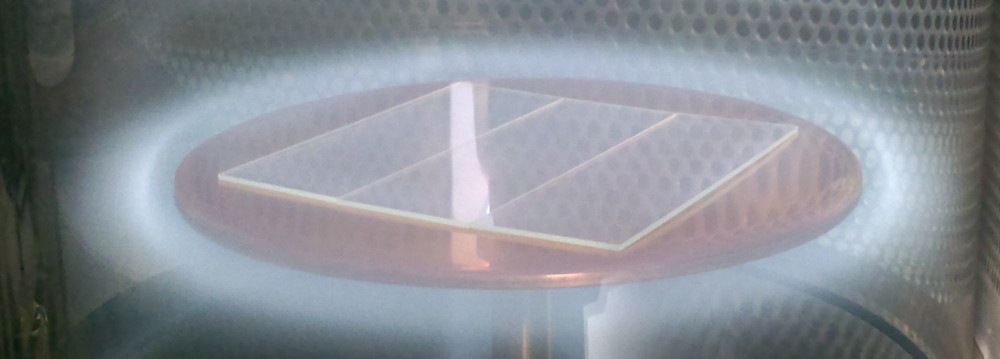Plasma polymerization has sometimes been a called a black art. How else to describe a process that takes a well-defined chemical structure, puts it in an electric field and shakes it about at 1 million times per second until it brightly glows and then chuck it at a surface and see what forms?
A poorly-controlled plasma polymerization might be imagined like this:

But how to control this process? During high-energy reactions, how do we prevent the formation of random polymer spaghetti? And can we figure out the rules for forming better defined plasma polymers with increased functional group retention?

While this example is greatly oversimplified, it emphasizes the point that when we use a well-controlled bolt of lightning to make surface coatings (albeit a cold one), we would rather have a less chaotic “scrambling” of the chemical in favour of more ordered and controlled deposits. The whole purpose of this is so that we can then use the intact bromine motif to perform other chemical reactions off of the surface.
I wrote about our ARC Discovery Grant “Order from Chaos” previously. With this project, we hope to discover some more fundamental rules that allow us to understand how to prepare functional polymeric coatings from fragile chemical precursors.
Our latest publication describes progress towards this aim as we try and write the lost instructions for the plasma black box. Here, lead author Solmaz Saboohi and the team from the Future Industries Institute describe new understanding arising from the use of analytical instrumentation to probe and compare the plasma phase and the resulting surface deposit that allows for “soft landing” of the excited chemical fragments. Contrary to conventional wisdom, using higher pressures — instead of lower ones — allows for better structural retention. In this regime, hyperthermal ions dominate in the plasma phase and are deposited to form plasma polymers with increased functionality.
You can find the publication here. Also, the article is open access.
Saboohi, S.; Coad, B. R.; Michelmore, A.; Short, R. D.; Griesser, H. J. Hyperthermal Intact Molecular Ions Play Key Role in Retention of ATRP Surface Initiation Capability of Plasma Polymer Films from Ethyl α-Bromoisobutyrate. ACS applied materials & interfaces 2016, 10.1021/acsami.6b04477.


